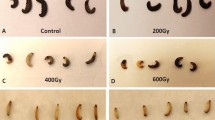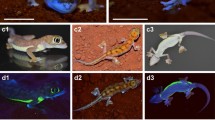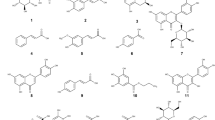Abstract
THE melanocyte-stimulating hormones and caffeine darken frog melanocytes by causing dispersion of melanin granules throughout the cell. While the end effect of these two substances on melanocyte opacity is the same, there are several differences in the way melanocyte-stimulating hormone and caffeine bring about dispersion. Lightening of melanocytes is produced by aggregation of melanin granules towards the centre of the cell. We found that triiodothyronine was an effective lightening agent of frog skin previously darkened by melanocyte-stimulating hormone but had no action on caffeine-treated skin. Because of this result we decided to test thyroxine and triiodothyroacetic acid for lightening properties.
This is a preview of subscription content, access via your institution
Access options
Subscribe to this journal
Receive 51 print issues and online access
$199.00 per year
only $3.90 per issue
Buy this article
- Purchase on Springer Link
- Instant access to full article PDF
Prices may be subject to local taxes which are calculated during checkout
Similar content being viewed by others
References
Shizume, K., Lerner, A. B., and Fitzpatrick, T. B., Endocrinol., 54, 553 (1954).
Money, W. L., Meltzer, R. I., Feldman, D., and Rawson, R. W., Endocrinol., 64, 123 (1959).
Wright, M. R., and Lerner, A. B., Endocrinology (in the press).
Author information
Authors and Affiliations
Rights and permissions
About this article
Cite this article
WRIGHT, M., LERNER, A. Action of Thyroxine Analogues on Frog Melanocytes. Nature 185, 169–170 (1960). https://doi.org/10.1038/185169a0
Issue Date:
DOI: https://doi.org/10.1038/185169a0
This article is cited by
-
The Therapeutic Effect of Melatonin on Canine Melanosis
Journal of Investigative Dermatology (1965)
-
A melanocyte-stimulating substance in the skin secretion of Xenopus laevis
Zeitschrift f�r Vergleichende Physiologie (1961)
-
Serotonin, a Melanocyte-stimulating Component in the Dorsal Skin Secretion of Xenopus laevis
Nature (1960)
Comments
By submitting a comment you agree to abide by our Terms and Community Guidelines. If you find something abusive or that does not comply with our terms or guidelines please flag it as inappropriate.



